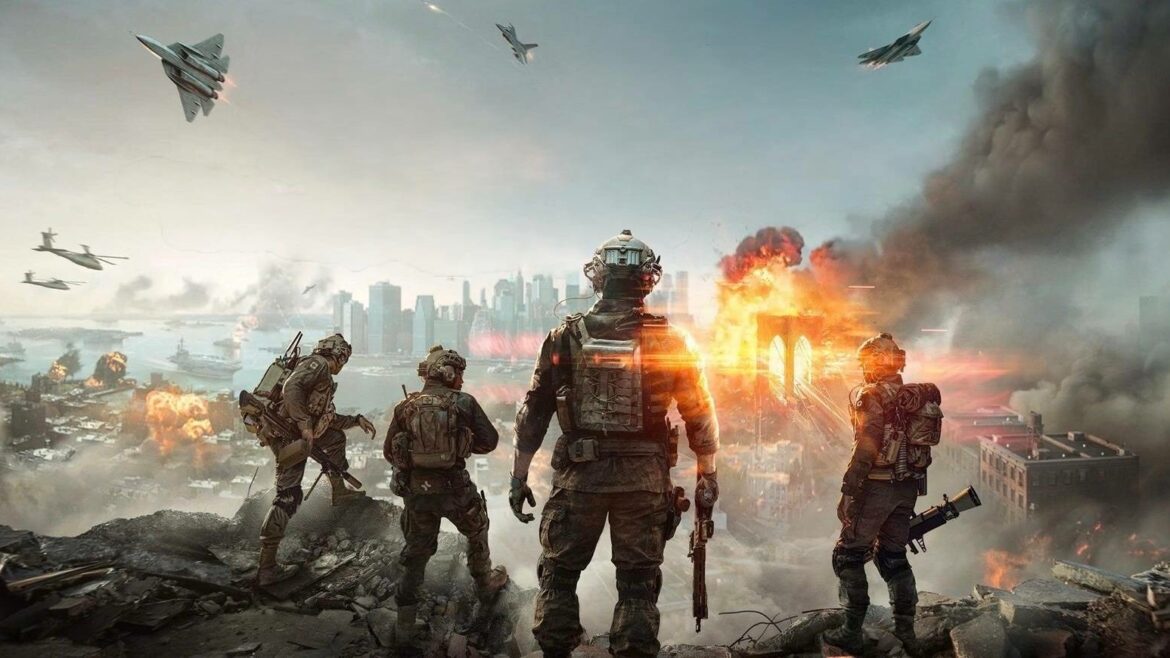Battlefield 6 – Activision and EA were once two parallel powerhouses vying for the “throne” of the shooter genre. From a Call of Duty created to directly rival Medal of Honor, to the “digs” in Bad Company, and then to the final two Medal of Honor titles that tried to salvage the brand but ended up fading into obscurity and forgettability.
That rivalry peaked when Battlefield 3 and Call of Duty: Modern Warfare 3 launched simultaneously, igniting a fierce battle to claim who was the true “ruler” of modern warfare.
Yet Activision held an advantage EA never truly grasped: a loyal fanbase that stuck around almost regardless of failures. Even as Call of Duty stumbled repeatedly—from being overshadowed by Battlefield 1 in 2016, to disappointing entries like Vanguard or Modern Warfare 3 in 2023—the franchise still raked in billions in profit for Activision Blizzard and now Microsoft, its new owner.
But the tides seem to be turning. Once again, EA stands at a historic opportunity as Call of Duty “trips” with a trailer flooded with YouTube dislikes, while Battlefield 6 makes a triumphant return with a grand “deployment” that hits right at players’ cravings for the chaotic atmosphere and massive scale signature to the series.
If not now, then when? All EA needs to do is launch Battlefield 6 true to fans’ expectations and “keep the momentum” through Season 1.
So, can EA and Battlefield Studios (a powerhouse of four studios: Criterion, DICE, Ripple Effect, and MOTIVE) succeed in “catching their rival Call of Duty at a low point”? Let’s step into a battlefield that’s “both familiar and fresh” with Battlefield 6 alongside MarkGame, shall we?
YOU WILL LIKE
An Overwhelming Battlefield!
Perhaps the most Battlefield-like thing about Battlefield 6 isn’t the scale or the arsenal count, but the thick, palpable atmosphere the game delivers. After a Battlefield 2042 that felt overly polished and artificial in its visuals, the development team has rediscovered the franchise’s core spirit: the messy, oppressive, smoke-choked chaos of a world engulfed in war.
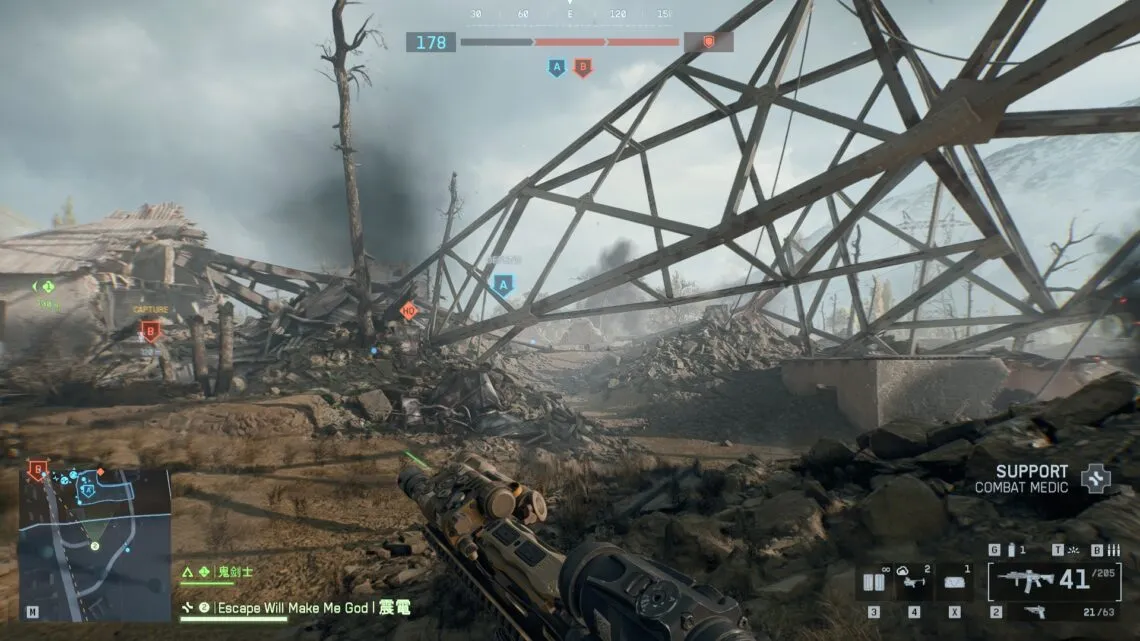
The graphics in Battlefield 6 don’t chase hyper-realistic detail but instead prioritize effects and atmosphere. Lighting, smoke, dust, and dynamic weather act like brushstrokes in a cinematic war painting.
Each map has its own distinct art style, yet all share a muted, low-contrast palette that evokes real wartime footage—where everything is coated in dust, blurred, and tinged with metallic hues. New Sobek City delivers the arid feel of a desert construction site, with lone floodlights and dust blanketing the structures. Siege of Cairo plunges you into suffocating urban combat: narrow streets, shattered walls, and metallic echoes reverberating from afar. Meanwhile, Liberation Peak conjures the chilling high-altitude air, thick fog, and the deep, muffled booms of artillery echoing off cliff faces.
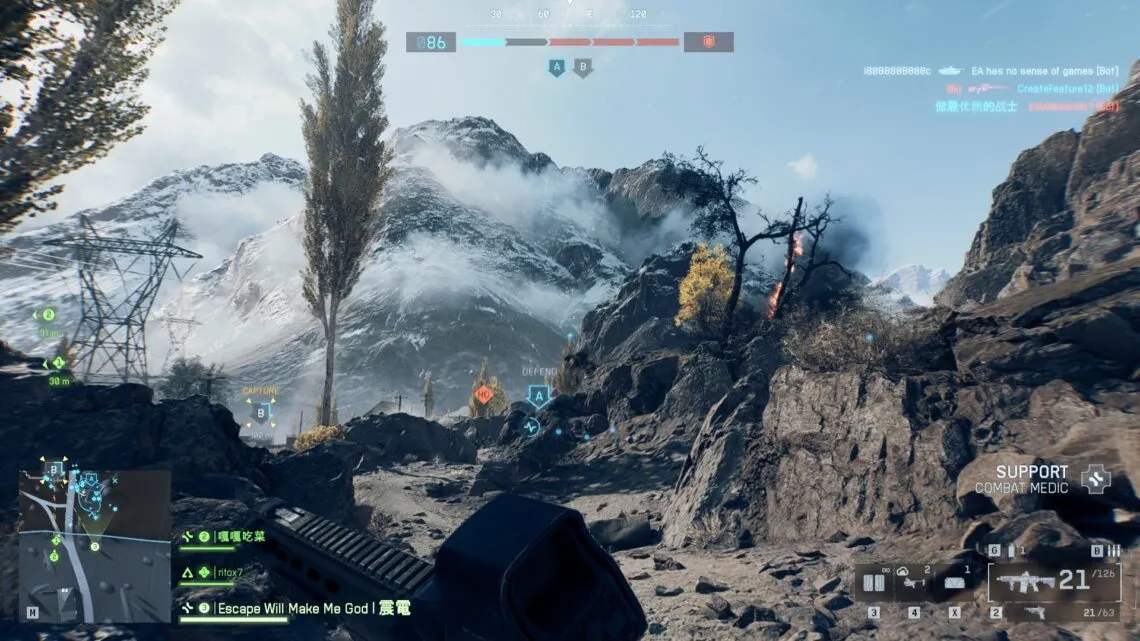
The audio reaches a rare level of realism. Battlefield 6 doesn’t just reproduce gunfire and explosions—it recreates the rhythm of chaos. The clanging of metal, the roar of jets streaking overhead, panicked shouts, and distant calls through smoke and dust are masterfully layered into a dense, living soundscape.
The War Tape V.A.L audio system, first introduced in Battlefield: Bad Company 2, makes a comeback, rendering sound as if it were recorded live on the battlefield. It pulls players so deeply into the fray that it no longer feels like you’re behind a screen—you’re right in the heart of the war’s “storm”.

All of this comes together to create a Battlefield 6 that feels profoundly real—not in hyper-sharp visuals, but in raw sensation. When smoke obscures your vision, when sound ricochets from every direction, and when a faint beam of light cuts through the ruins, players suddenly realize that Battlefield 6 delivers more than just a game—it’s a battlefield experience, where every sense is pushed to its limit. It produces those “cinematic” moments: bombs exploding, bodies flying, teammates desperately fighting to capture objectives or complete missions amid the chaos.

Beyond atmosphere and sound, Battlefield 6 also shows meticulous attention to the aesthetic of each soldier—a key factor in defining the unique identity of each faction. The two main forces, Pax Armata and NATO, differ not only in ideology but are vividly portrayed through their visual styles.
Pax Armata resembles a well-funded army, equipped with modern, expensive gear. Their armor and helmets are sleek, sharply designed, exuding the cold precision of cutting-edge technology.
In contrast, NATO in Battlefield 6 has a more pragmatic and slightly disheveled look. Their uniforms are often oversized, worn and patched, with gear that appears outdated or repurposed from old battlefields.
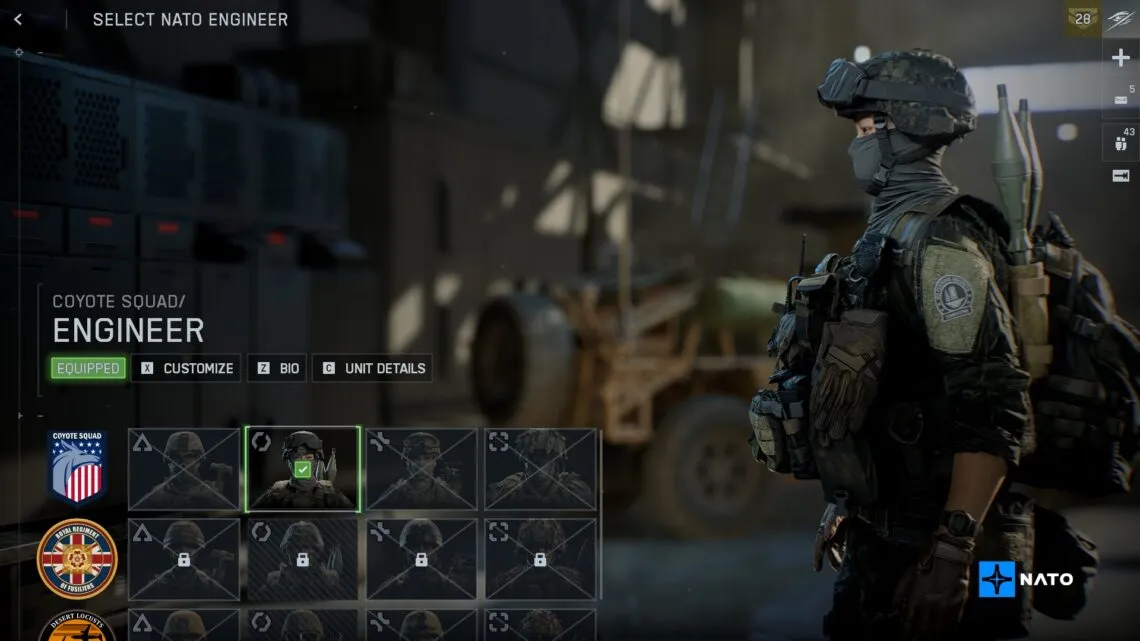
Small details are meticulously crafted—engineers with a wrench clipped to their belt, assault troops with empty grenade pouches dangling, support soldiers with loose medical bandages and gloves—making them look like veterans hardened by prolonged, resource-scarce combat.
The standout feature is how Battlefield 6 captures human emotion amid the chaos. Battlefield chatter isn’t just commands or callouts; it’s often replaced by screams, curses, or sudden cries for help when someone takes a bullet.
Each soldier’s voice is rich with expression—sometimes trembling, sometimes snarling—highlighting individuality in an anonymous war. Character death animations, while slightly exaggerated, are impactful enough to make every fall a distinct moment, noticed by teammates and acknowledged by enemies.
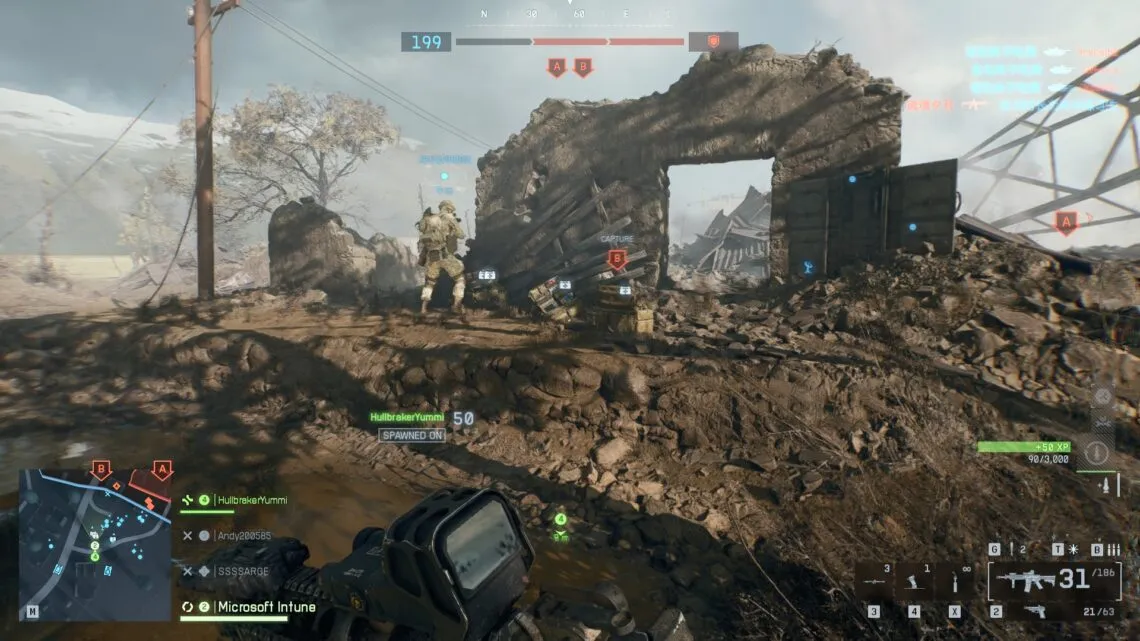
All these details—from gear aesthetics to sound and expressions—merge into a vivid battlefield portrait, where Battlefield 6 doesn’t just recreate the scale of war but captures its pulse, breath, and deeply human chaos in every match.
The visual and audio experience of Battlefield 6 is truly extraordinary, with a clear and consistent artistic direction that delicately balances cinematic exaggeration, realistic atmosphere, and astonishing attention to detail. This fusion helps Battlefield 6 forge an atmosphere nearly unmatched in the war game genre—a level DICE once achieved with Battlefield 1.
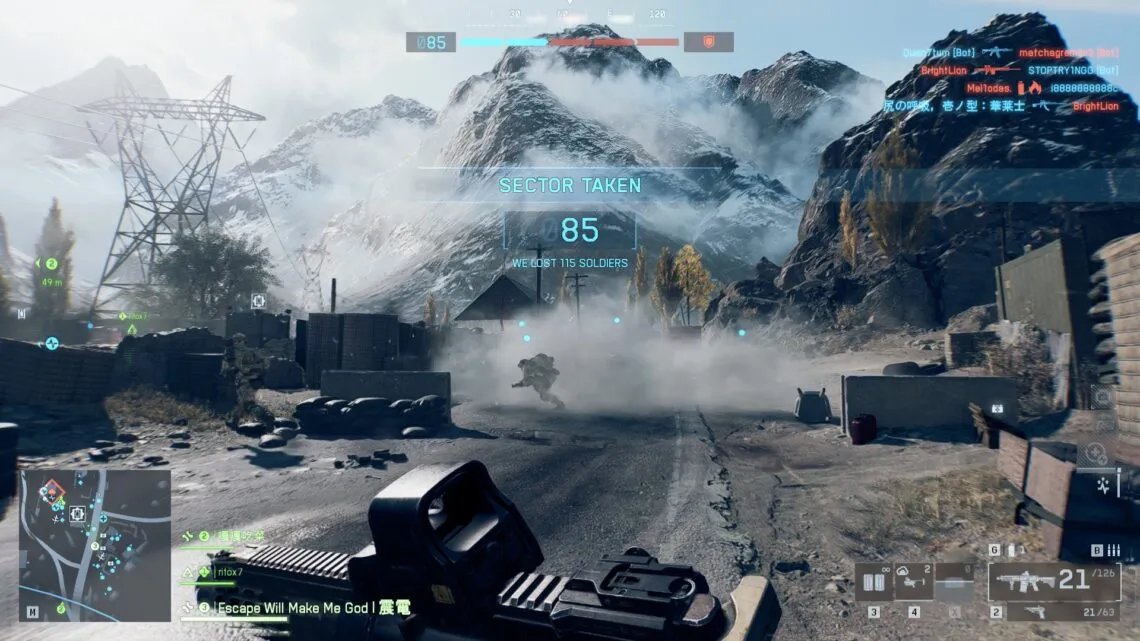
Every element—from environmental scenery, lighting effects, and the roar of weaponry to soldier animations and gear—interconnects to form a unified, brutal, and weighty whole.
The battlefield in Battlefield 6 isn’t just grand and ferocious; it’s breathtakingly beautiful, leaving players simultaneously terrified, captivated, and unable to look away from every moment unfolding before them
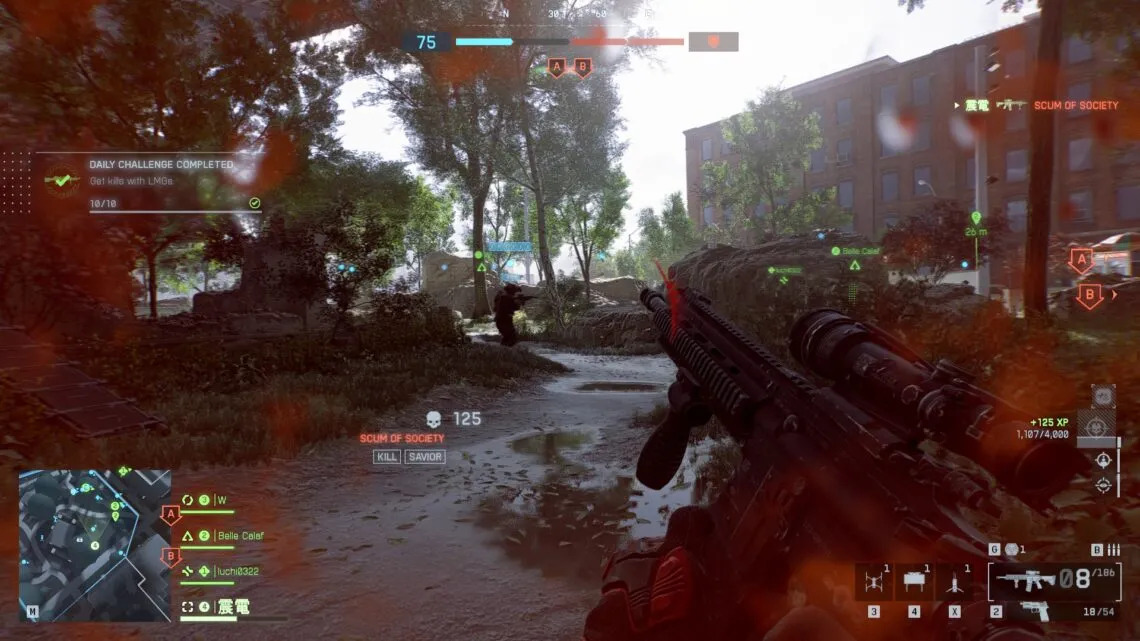
Fierce Combat
The exceptional visuals and audio in Battlefield 6 go beyond just crafting an immersive atmosphere—they make the act of shooting feel more satisfying than ever before.
Every weapon is crafted with incredible detail, differing not only in appearance but in feel. Even two guns with near-identical stats are instantly distinguishable by their recoil, sound, trigger response, and impact effects. The shooter senses the weight and kick of the firearm; the target feels the force of each hit through blood splatter, audio feedback, and screen shake.
The mechanics of bullet drop, recoil, and spread are so finely tuned that each gun delivers a unique, authentic, and deeply rewarding shooting experience!
The arsenal and vehicles in Battlefield 6 also reflect a clear design vision. While debates linger—such as whether assault troops should use Deploy Beacons—overall, every vehicle has a defined role and high tactical value.

Tanks, armored vehicles, helicopters, and artillery aren’t just tools for mobility or damage—they often become the core of the battle’s rhythm, forcing both teams to revolve around them like map hotspots. This is pure Battlefield DNA.
Most impressively, the Engineer class has been meticulously tuned to serve as a true counter to vehicles. Anti-tank mines (AV) pack devastating punch, SLAM mines offer flexible placement, and the RPG-7 delivers crippling damage when striking from the rear—creating a thrilling man-vs-machine dynamic.
That said, some players note that aircraft in Battlefield 6 feel underpowered compared to past titles. Personal anti-air weapons are so potent that the skies rarely become a playground for pilots to dominate like in Battlefield 3 or Battlefield 4.
The game modes in Battlefield 6 further prove that scale doesn’t always equal quality, showcasing flexible pacing tailored to each map.
Rush and Breakthrough shine on tighter, corridor-like maps, where direct confrontations are unavoidable and the tempo stays relentlessly high. Stalemates over objectives, nonstop gunfire, and claustrophobic combat spaces turn every meter gained into a suffocating struggle—echoing the spirit of Battlefield: Bad Company 2, but with far greater scale and destruction.

Escalation—the mode beloved by fans in Battlefield 2042—returns with objectives that progressively shrink as the match unfolds, forcing both sides to constantly adapt tactics as the front line shifts. Escalation matches in Battlefield 6 stand out as a clear highlight, striking a balance between the high momentum of Breakthrough and the strategic depth of Domination, delivering a pace that’s both intense and allows breathing room for team coordination.
Additionally, close-quarters combat (CQB) modes shine brightly. Maps with tight corridors, multiple paths, and layered verticality create intimate, relentless, and unpredictable firefights—without relying on the simplistic three-lane structure seen in Call of Duty.

However, a notable drawback is the absence of truly massive maps—the very “soul” of the Battlefield series—which at times robs the game of the diversity and signature sense of scale that longtime fans expect.
Even so, Battlefield 6 demonstrates masterful control over battle pacing at every scale—from chaotic close-quarters skirmishes to grand, large-scale assaults—marking a powerful step forward in balancing cinematic spectacle with tactical depth, a hallmark the series has always pursued.
Battlefield 6 still excels at commanding the rhythm of combat across all scales—from frantic close-range chaos to sweeping large-scale offensives
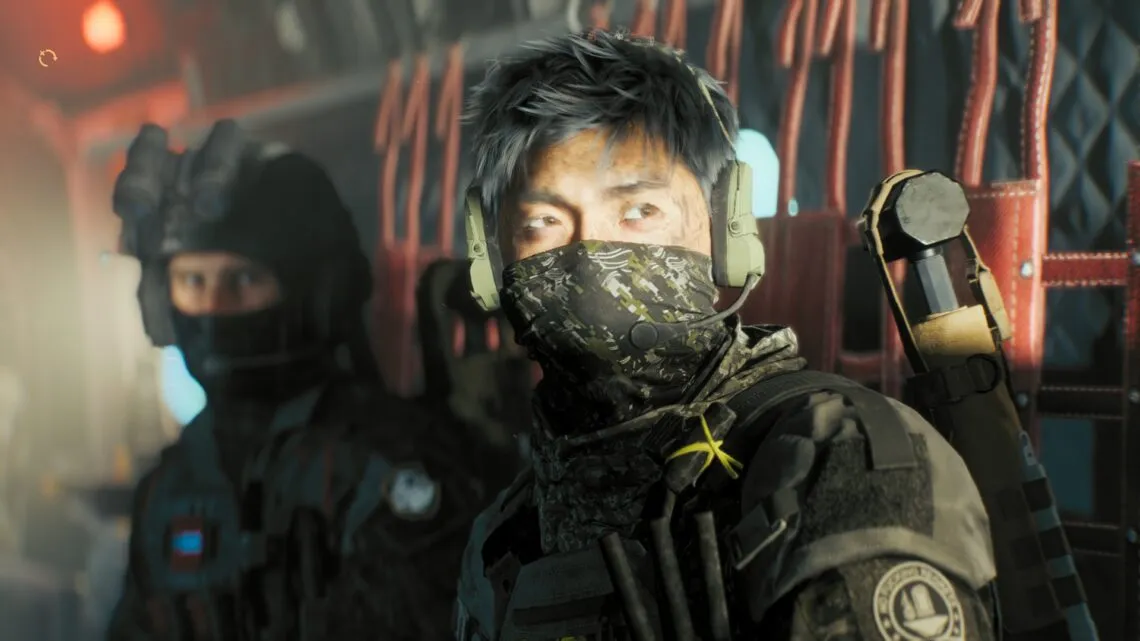
Forbidden Zone
The Battle Royale mode in Battlefield 6, titled REDSEC (Redacted Sector), is a bold and worthwhile experiment. Released for free, REDSEC doesn’t try to compete with genre giants through sheer scale or randomness. Instead, it shrinks the map and compresses the pacing. Zones are densely packed with layered terrain, varied elevations, and deliberately placed obstacles, fostering multidimensional, high-tension firefights with clear tactical depth.
Unlike the sprawling, empty, luck-driven battlegrounds of many competitors, REDSEC emphasizes coordination and positioning. Controlling high ground, holding lanes, or flanking becomes a matter of survival—turning each match into a compact team-based tactical puzzle rather than a chaotic free-for-all.

The map’s compact design eliminates meaningless dead zones, forcing players into early and frequent engagements.
Alongside the traditional Battle Royale, Battlefield 6 introduces Gauntlet, a creative knockout competition mode. Eight squads of four face off across four rounds with randomly assigned objectives—ranging from capturing points and planting bombs to eliminating targets or protecting teammates. After each round, the lowest-scoring team is eliminated, steadily ramping up the intensity with every stage.
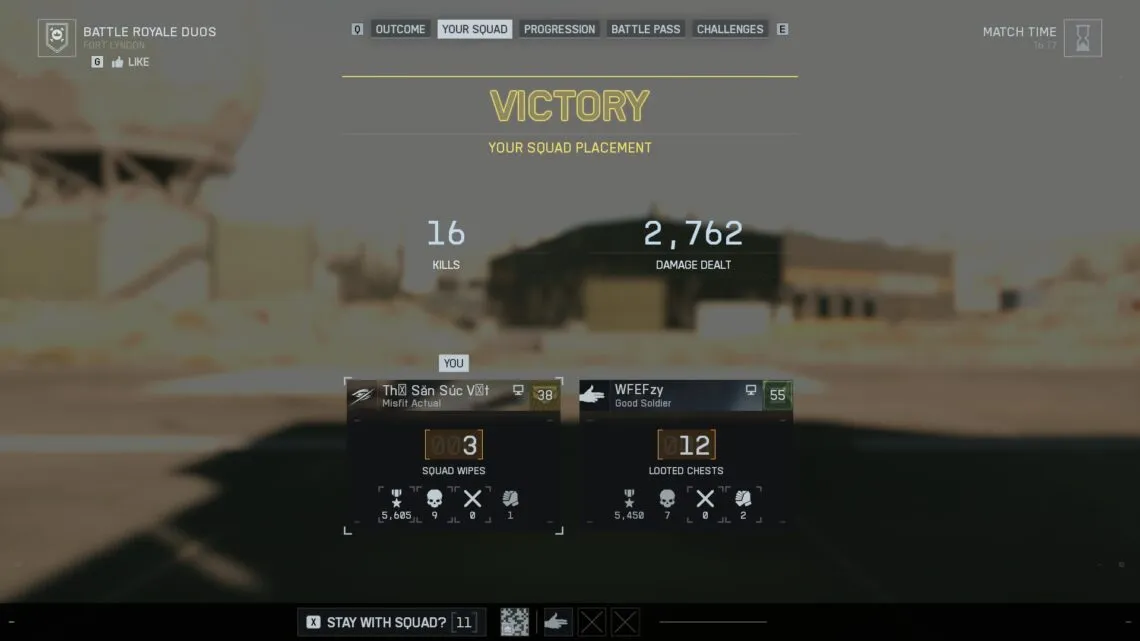
REDSEC showcases Battlefield Studios’ commendable effort to redefine the battle royale formula in true Battlefield spirit: tactical, team-driven, and explosive
Gauntlet puts squad coordination front and center—one small mistake can end the entire run. The constant shift between objective types, combined with relentless pacing and knockout pressure, makes Gauntlet one of the most standout and well-executed modes in Battlefield 6, perfectly balancing tactics, action, and teamwork.
While not yet as polished as standalone battle royales, REDSEC demonstrates Battlefield Studios’ notable effort to reimagine the genre with Battlefield’s core DNA: tactical depth, collective play, and explosive chaos. It may not be the ultimate answer to battle royale ambitions, but it’s distinct enough to carve out the series’ identity in an oversaturated market.
YOU WILL HATE
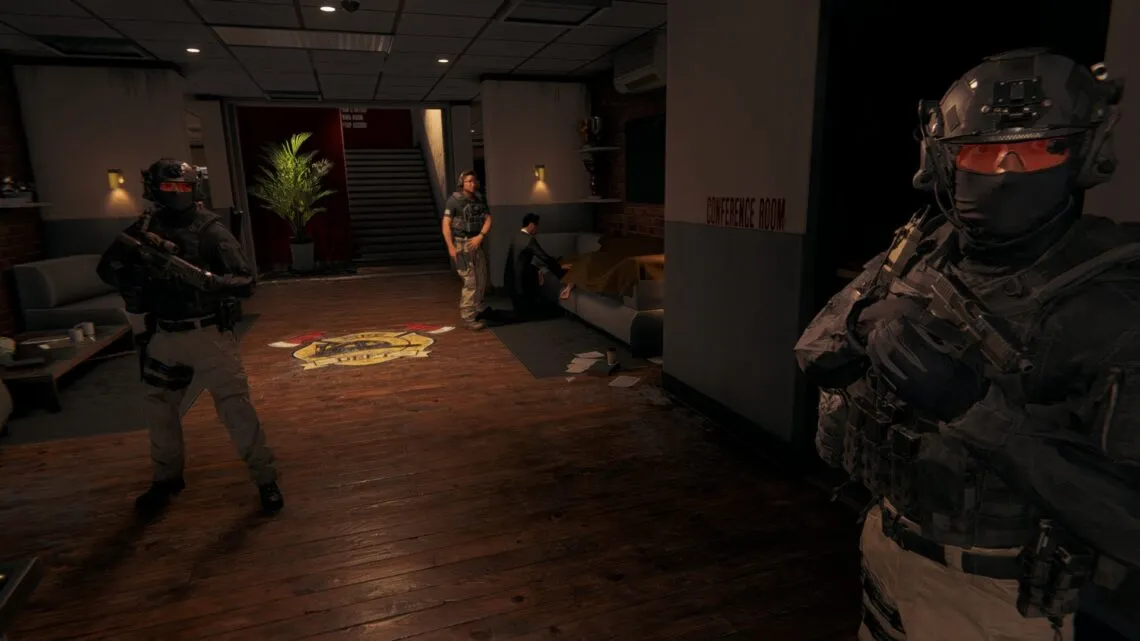
Why Are We Even Fighting?
The single-player campaign in Battlefield 6 is a clear effort but falls short of expectations, especially compared to what Call of Duty has consistently delivered over the years. After years of near-total focus on multiplayer, Battlefield Studios bringing back a single-player mode was a logical step. However, the final result leaves players feeling underwhelmed.
The biggest weakness lies in the gameplay. Campaign missions lack variety and creativity, mostly revolving around tired templates like capturing objectives, destroying anti-air systems, or escorting convoys.
Low interactivity, overly linear mission design, and virtually no meaningful choices make players feel led by the nose rather than immersed in a real warzone. Despite spectacular explosions, polished graphics, and high-production effects, the overall experience feels disjointed and lacking in tension—something Call of Duty usually nails.
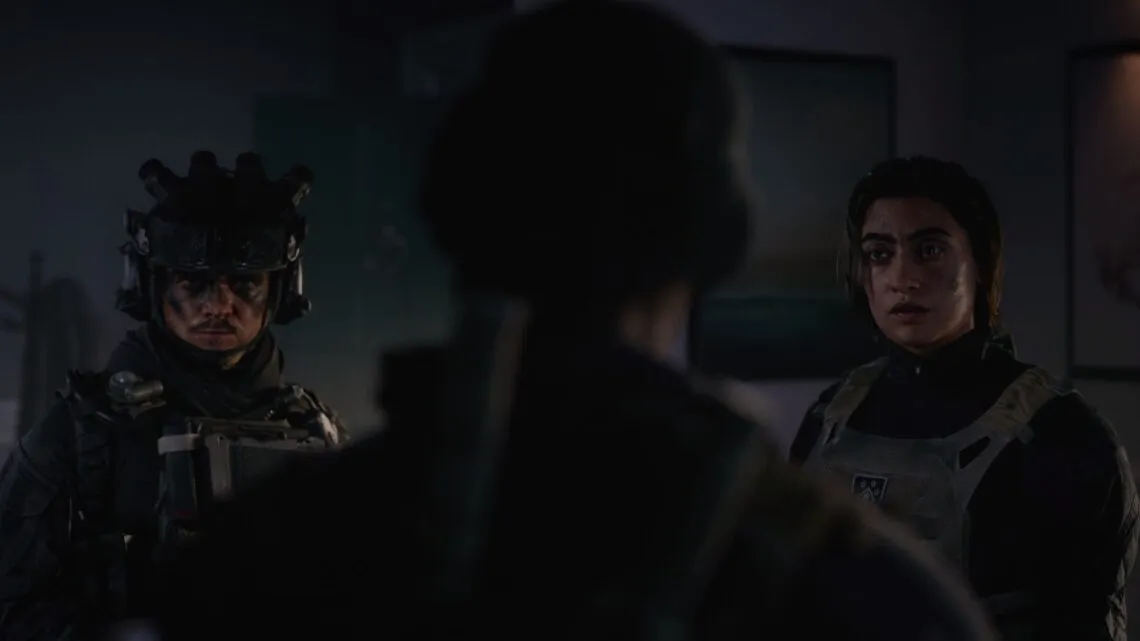
Battlefield 6‘s story is another major drawback. The conflict between NATO and the private force Pax Armata has great potential as a backdrop, but the scriptwriting fails to capitalize on it. The protagonist lacks depth, teammates are forgettable, and the dialogue feels stiff and predictable.
Compared to Call of Duty: Modern Warfare II (2022) or Black Ops Cold War, where every character has a distinct personality and is placed in tightly constructed scenarios, Battlefield 6‘s single-player feels more like a tech demo than an emotional narrative.
Of course, the game still has memorable moments. Action sequences—like tank chases, aerial pursuits, or high-intensity shootouts—are meticulously staged and overwhelmingly spectacular. But those moments are fleeting, before players realize the overall pacing remains… monotonous and devoid of climaxes. While Call of Duty masterfully blends storytelling, action, and rhythm, Battlefield 6 relies too heavily on scale and effects to make an impact.
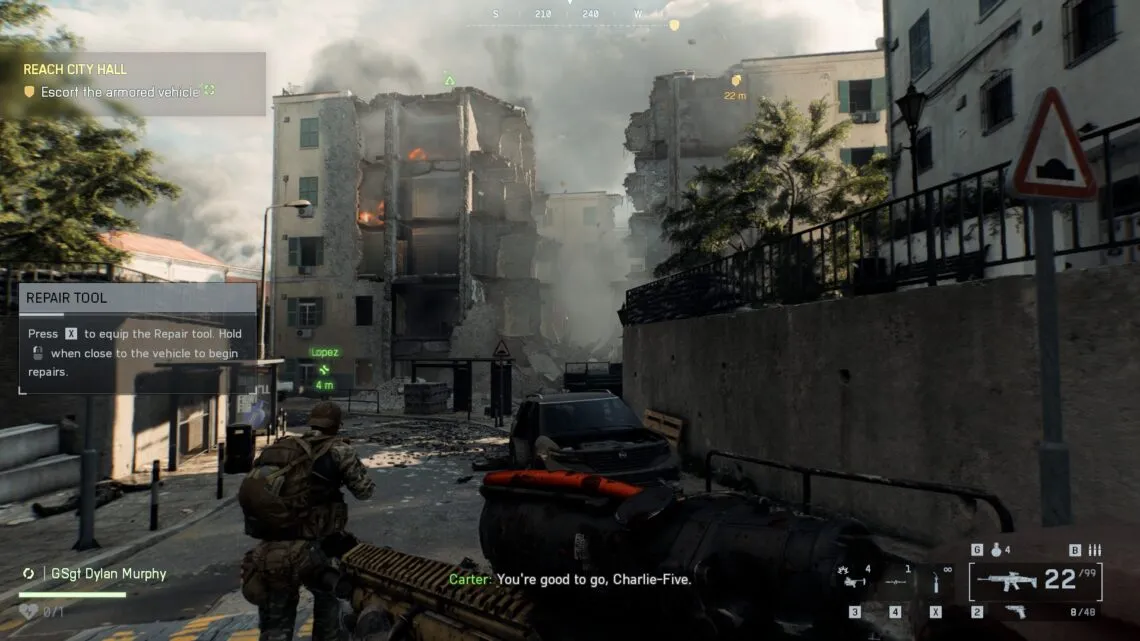
The single-player mode in Battlefield 6 feels more like a technical showcase than an emotional story.
As usual, the single-player campaign in Battlefield 6 remains a major weakness for the franchise, even though the approach has been gradually improving with the short War Stories in Battlefield 1 and Battlefield V. Still, it falls far short of directly competing with Call of Duty, even the most forgettable entries like Vanguard or Modern Warfare 3 (2023).
And perhaps the most heart-wrenching part of this campaign is that the game locks too many rewards behind it—so grinding through 10 hours of single-player just to unlock skins, gear, and other rewards is truly… painful.
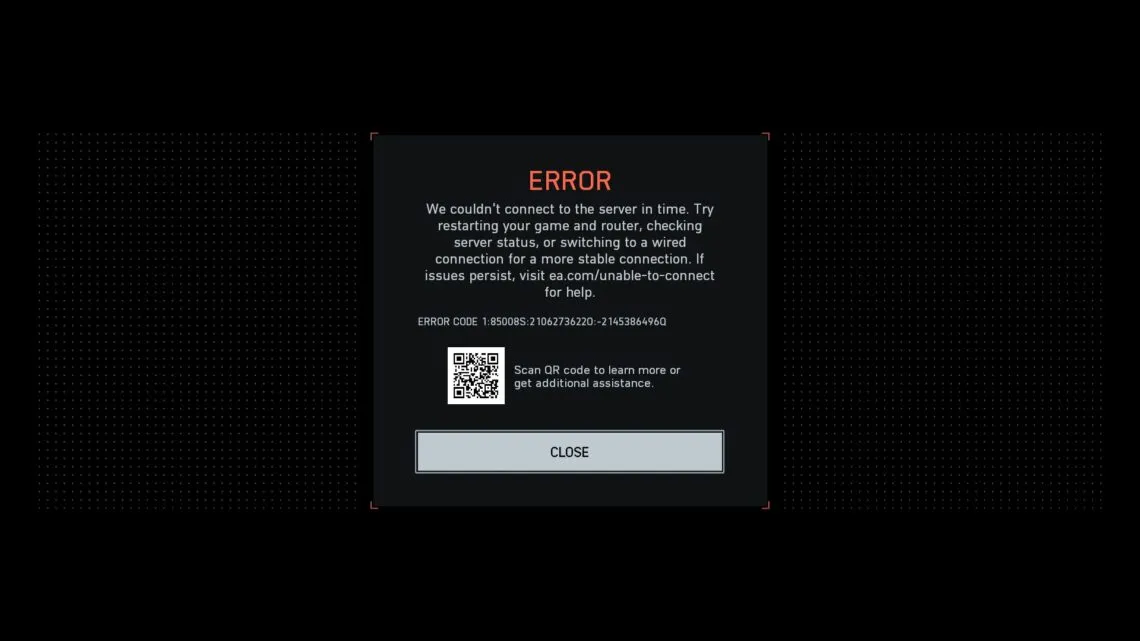
A Clumsy Finish Line
The reason this review is coming out so late is that the writer wanted to see how Battlefield Studios would manage Battlefield 6 post-launch—because, unfortunately, 99% of the game’s value lies in how the publisher and developers operate it after release. And as of now, the results are still cause for concern.
First, the upgrade and unlock system for gear in Battlefield 6 is widely criticized as overly tedious and illogical. Many challenges are drawn-out and unreasonable, such as requiring players to score 15 headshots at over 150 meters to fully unlock DMRs, or suppress hundreds of enemies to unlock all LMGs.
These kinds of conditions turn progression into a grueling, frustrating slog rather than encouraging experimentation. The unlock mechanics are not only convoluted but also inconsistent across weapon classes, making in-game progression feel forced and heavy-handed.
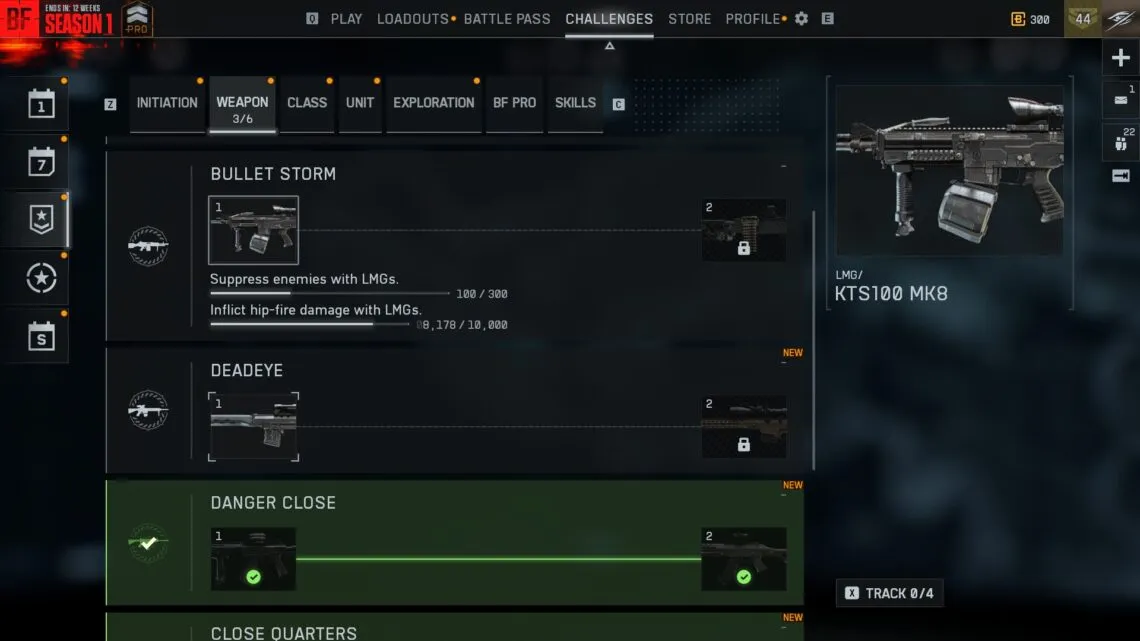
Not stopping there, the grind extends to other systems like the Battle Pass, where players are forced to complete endless repetitive tasks to unlock gear, skins, or cosmetic items. This design risks turning the game into a “grind simulator,” overshadowing the series’ core strengths: fast-paced combat and large-scale immersion.
The new items and skins in Season 1 have also sparked controversy. Instead of preserving the authentic, gritty, military tone that defines Battlefield, these cosmetics are gaudy, over-the-top, and completely shatter the consistency the game worked so hard to establish.
When a franchise once celebrated for its “realism on the battlefield” starts turning into a “cosplay stage”—just like its increasingly “degenerate” rival Call of Duty—it’s hard for players not to feel disappointed.
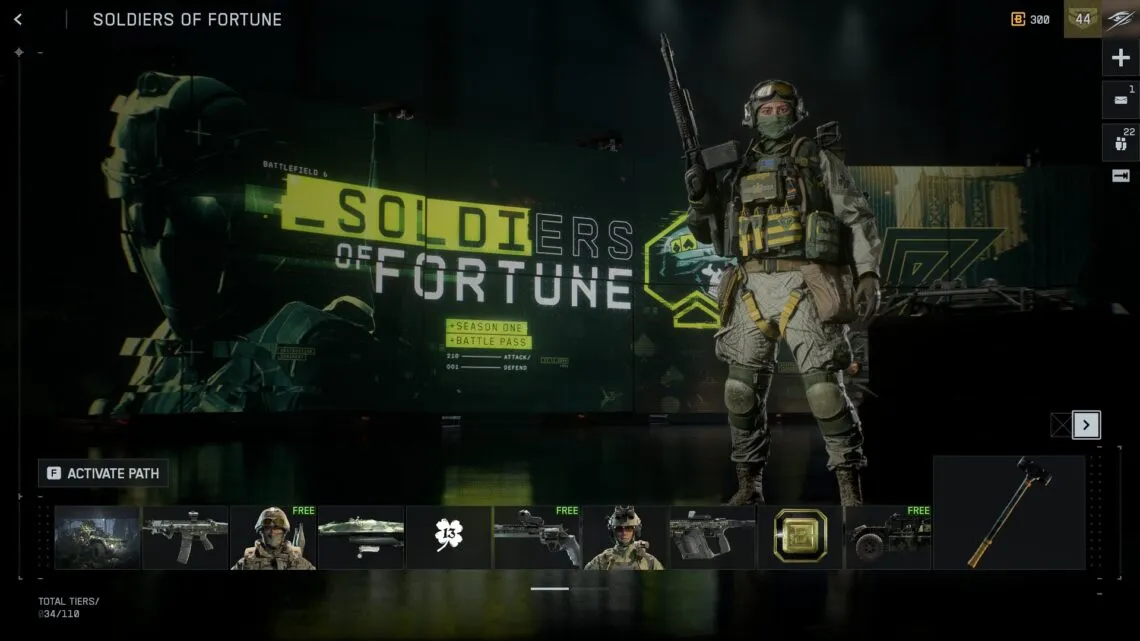
Moreover, the sudden addition of REDSEC without corresponding netcode improvements has severely impacted the online experience. Matchmaking is now far more difficult—players are often dumped into bot-filled lobbies, wasting time before a real match starts. This not only disrupts gameplay flow but also drives players away, leaving them feeling abandoned in an unstable environment.
Additionally, Battlefield Studios remains clumsy in balancing community demands with progression control in Portal mode. To curb XP farming, they disabled bot modes across the board—a move that inadvertently harmed creative communities and serious players experimenting with custom rules. This decision reveals the team still hasn’t found a fair way to maintain integrity while fostering creativity.
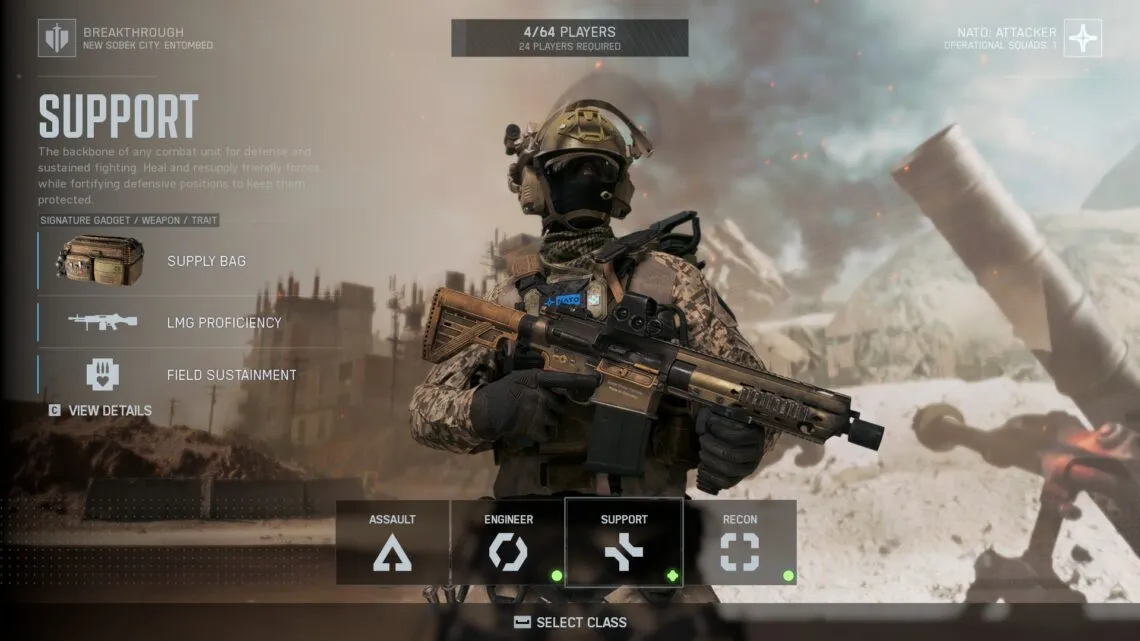
Finally, Battlefield 6 remains a game with immense potential, but Battlefield Studios’ current operations are holding back most of that value. When players feel forced to “work” just to enjoy the game instead of being rewarded for their effort, it no longer embodies the spirit of Battlefield.
Battlefield Studios still appears clumsy in balancing community needs with progression control in Portal mode
